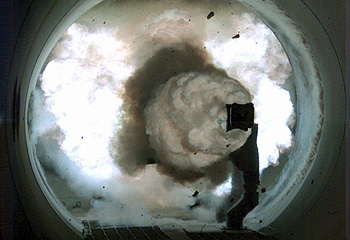INDIAN ARMED FORCES CHIEFS ON OUR RELENTLESS AND FOCUSED PUBLISHING EFFORTS

The insightful articles, inspiring narrations and analytical perspectives presented by the Editorial Team, establish an alluring connect with the reader. My compliments and best wishes to SP Guide Publications.

"Over the past 60 years, the growth of SP Guide Publications has mirrored the rising stature of Indian Navy. Its well-researched and informative magazines on Defence and Aerospace sector have served to shape an educated opinion of our military personnel, policy makers and the public alike. I wish SP's Publication team continued success, fair winds and following seas in all future endeavour!"

Since, its inception in 1964, SP Guide Publications has consistently demonstrated commitment to high-quality journalism in the aerospace and defence sectors, earning a well-deserved reputation as Asia's largest media house in this domain. I wish SP Guide Publications continued success in its pursuit of excellence.
- Global Partners Urged to Tap India's Shipbuilding Potential: Rajnath Singh at Samudra Utkarsh
- All about HAMMER Smart Precision Guided Weapon in India — “BEL-Safran Collaboration”
- India, Germany deepen defence ties as High Defence Committee charts ambitious plan
- G20 Summit: A Sign of Global Fracture
- True strategic autonomy will come only when our code is as indigenous as our hardware: Rajnath Singh
- India–Israel Joint Working Group Meeting on defence cooperation to boost technology sharing and co-development
TecKnow
Improved Safety

Electromagnetic railgun sets world record by shooting projectile at Mach 7
The US Navy’s electromagnetic railgun has set a world record by shooting projectile at Mach 7, seven times faster than the speed of sound.
The office of Naval research (ONR) has achieved a milestone conducting a world record of 33-megajoule shot of the electromagnetic railgun aboard Naval surface Warfare Center dahlgren division.
Chief of Naval research rear Admiral Nevin Carr said, “This demonstration moves us one day closer to getting this advanced capability to sea. The 33-megajoule shot means the Navy can fire projectiles at least 110 nautical miles, placing sailors and marines at a safe standoff distance. The high velocities achievable are tactically relevant for air and missile defence.”
The gun was launched from a control centre after approximately four minutes of charging of electromagnetic rails. After the completion of the charging process, the gun was fired and the witnesses saw a quick burst of flame as the projectile travelling at 2,500 metres per second (or Mach 7) hit its intended target.
Unlike conventional cannons which rely on an explosion to fire a projectile, the electromagnetic railgun uses an electromagnetic current to accelerate a non-explosive bullet at several times the speed of sound. The projectile, which is conductive, travels along a pair of metal rails as an electric current is passing through the projectile. The rails generate a magnetic field, which interacts with the current to move the projectile at extremely high velocities.





